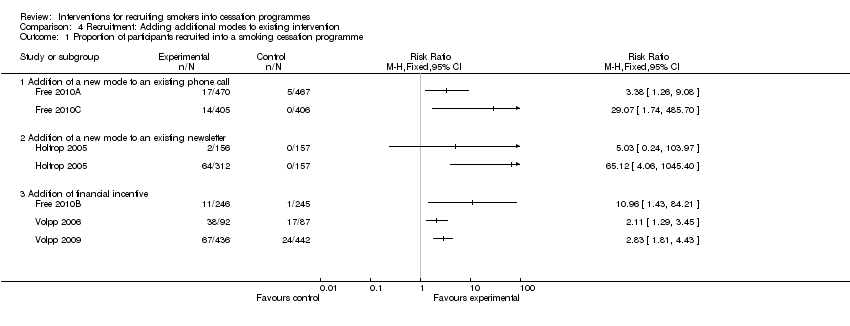Contenido relacionado
Revisiones y protocolos relacionados
Nancy A Rigotti, Carole Clair, Marcus R Munafò, Lindsay F Stead | 16 mayo 2012
Lindsay F Stead, Allison J Carroll, Tim Lancaster | 31 marzo 2017
Malgorzata M Bala, Lukasz Strzeszynski, Roman Topor‐Madry | 21 noviembre 2017
Kate Cahill, Tim Lancaster | 26 febrero 2014
Jonathan Livingstone‐Banks, José M. Ordóñez‐Mena, Jamie Hartmann‐Boyce | 9 enero 2019
Michael H Ussher, Guy E J Faulkner, Kathryn Angus, Jamie Hartmann‐Boyce, Adrian H Taylor | 30 octubre 2019
Kristin V Carson‐Chahhoud, Jonathan Livingstone‐Banks, Kelsey J Sharrad, Zoe Kopsaftis, Malcolm P Brinn, Rachada To‐A‐Nan, Christine M Bond | 31 octubre 2019
Regina M van der Meer, Marc C Willemsen, Filip Smit, Pim Cuijpers | 21 agosto 2013
Jonathan Livingstone‐Banks, Emma Norris, Jamie Hartmann‐Boyce, Robert West, Martin Jarvis, Emma Chubb, Peter Hajek | 28 octubre 2019
Intervenciones farmacológicas para la promoción del abandono del hábito de fumar durante el embarazo
Ravinder Claire, Catherine Chamberlain, Mary‐Ann Davey, Sue E Cooper, Ivan Berlin, Jo Leonardi‐Bee, Tim Coleman | 4 marzo 2020










